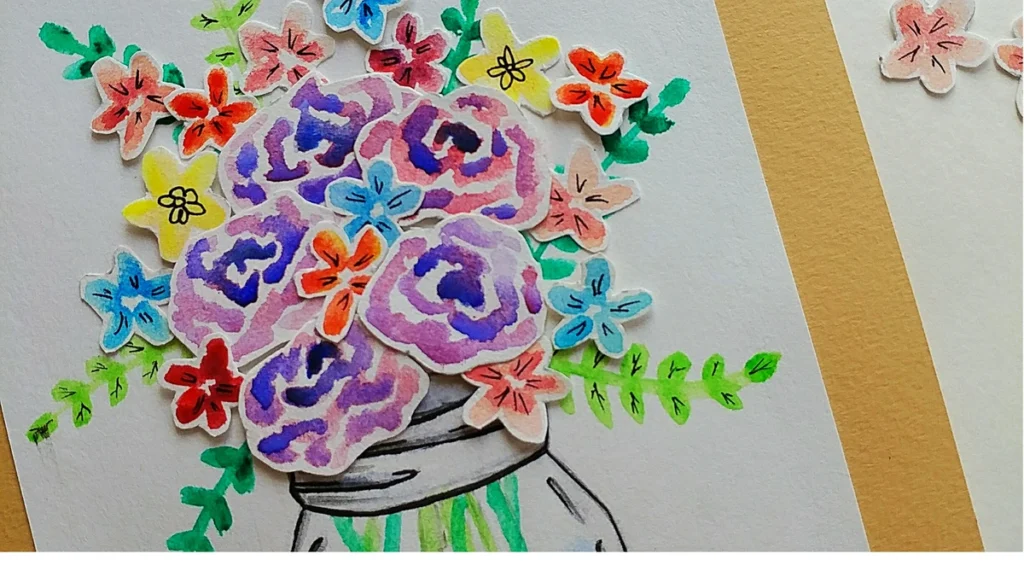Mixed media art is a versatile and exciting approach that allows artists to break traditional boundaries by combining various materials and techniques in a single artwork. Whether you’re a seasoned artist looking to expand your creative horizons or a beginner exploring new possibilities, mixed media opens the door to endless artistic expression. In this guide, we’ll cover the basics of mixed media, essential materials, and inspiring ideas to help you get started.
1. What Is Mixed Media Art?
Mixed media art involves the use of multiple materials or techniques in a single piece. This could mean combining paint with collage elements, layering textures with found objects, or even integrating digital and traditional methods. The goal is to create depth, dimension, and intrigue by blending diverse elements into a cohesive work.
2. Why Try Mixed Media?
Mixed media art offers several benefits:
- Creative Freedom: There are no rules; you can mix and match materials to suit your vision.
- Versatility: Suitable for various styles, from abstract to figurative art.
- Textural Appeal: Adding physical elements gives your artwork depth and tactile interest.
- Sustainability: Incorporating recycled or found objects is eco-friendly and cost-effective.
3. Essential Materials for Mixed Media
To begin experimenting with mixed media, start with basic supplies and expand as your creativity grows. Here’s a list of essentials:
Surface Options:
- Canvas
- Watercolor paper
- Wood panels
- Cardboard
- Fabric
Traditional Art Supplies:
- Acrylic, watercolor, or oil paints
- Charcoal, pastels, and graphite pencils
- Markers and ink pens
Textural Elements:
- Modeling paste or gesso
- Fabric scraps
- Sand, sawdust, or glitter
Collage Materials:
- Magazine clippings
- Photographs
- Newspaper or book pages
- Washi tape
Found Objects:
- Buttons, beads, and sequins
- Leaves, twigs, and flowers
- Metal pieces, like screws or wires
Tools:
- Brushes, palette knives, and sponges
- Stencils and stamps
- Scissors, glue, and adhesive sprays

4. Techniques for Mixed Media Art
Experimenting with mixed media is all about trying new things. Here are some techniques to explore:
a. Layering
Layering different materials can add depth to your work. Start with a painted base, then build layers with collage elements, textures, and additional paint or ink.
b. Texturing
Use modeling paste, gesso, or thick paint to create raised textures. Experiment with tools like palette knives or household items, such as combs or forks, for unique patterns.
c. Collage
Incorporate paper, fabric, or found objects into your work. Glue them onto your surface, then paint or draw over them to integrate them into the composition.
d. Blending Mediums
Combine wet and dry mediums, such as watercolor with ink or acrylics with pastels. Each combination offers unique visual effects.
e. Image Transfers
Transfer printed images onto your surface using gel medium or adhesive sprays. This technique works well for creating layers of meaning in your art.
5. Steps to Start Your Mixed Media Artwork
Step 1: Choose a Theme or Idea
Decide on a concept to guide your material choices. This could be a mood, story, or abstract idea.
Step 2: Select Your Materials
Pick a few materials that complement your theme. For beginners, start with a combination of paint, paper, and one or two textural elements.
Step 3: Prepare Your Surface
Apply a base layer of paint or gesso to your chosen surface. This creates a neutral foundation for your work.
Step 4: Build Layers
Add materials gradually, working from background to foreground. Allow each layer to dry before adding the next to prevent smudging or distortion.
Step 5: Add Details
Use fine-line tools, stamps, or stencils to add intricate patterns or final touches.
Step 6: Seal Your Artwork
Finish your piece with a protective varnish or sealant to preserve its texture and prevent damage.
6. Tips for Successful Mixed Media Art
- Start Simple: Avoid overwhelming yourself with too many materials or techniques at once.
- Experiment Freely: Treat each piece as a learning experience. Don’t be afraid to make mistakes.
- Incorporate Contrast: Mix smooth and rough textures, bright and muted colors, or organic and geometric shapes.
- Use Recycled Materials: Incorporating found or upcycled objects adds uniqueness to your work.
- Document Your Process: Photograph or journal your steps to learn what works and refine your technique.
7. Inspiring Mixed Media Ideas
Abstract Creations
Combine paint, fabric scraps, and textured elements to create abstract compositions that evoke emotion and energy.
Nature-Inspired Art
Use natural elements like leaves, twigs, or pressed flowers alongside watercolors or ink.
Portraits with Personality
Add layers of collage or textured paint to traditional portraits for a modern twist.
Storytelling Through Art
Incorporate text, photographs, or book pages to tell a narrative within your artwork.
Miniature Worlds
Create small, detailed pieces using a mix of materials to depict fantastical or realistic scenes.
8. Conclusion
Mixed media art is a limitless playground for creativity, offering endless opportunities to experiment and push artistic boundaries. By combining materials, techniques, and themes, you can create artwork that’s rich in texture, emotion, and meaning. Whether you’re adding layers of paint, incorporating found objects, or exploring new surfaces, the world of mixed media invites you to express yourself in entirely unique ways.

